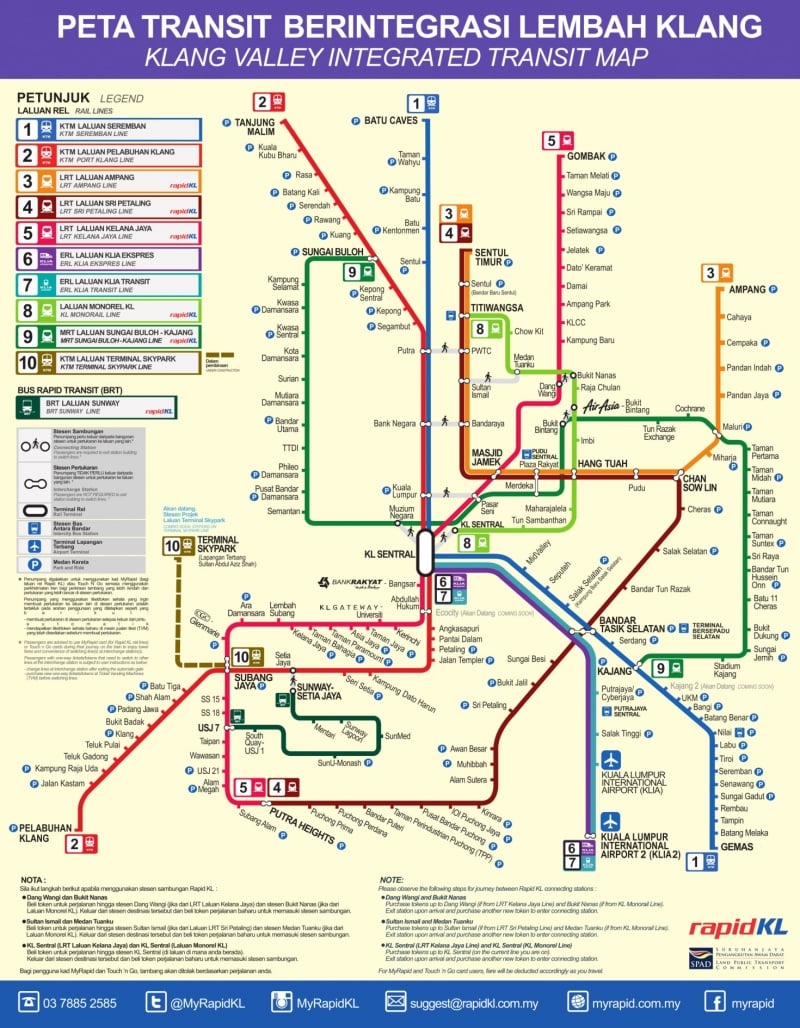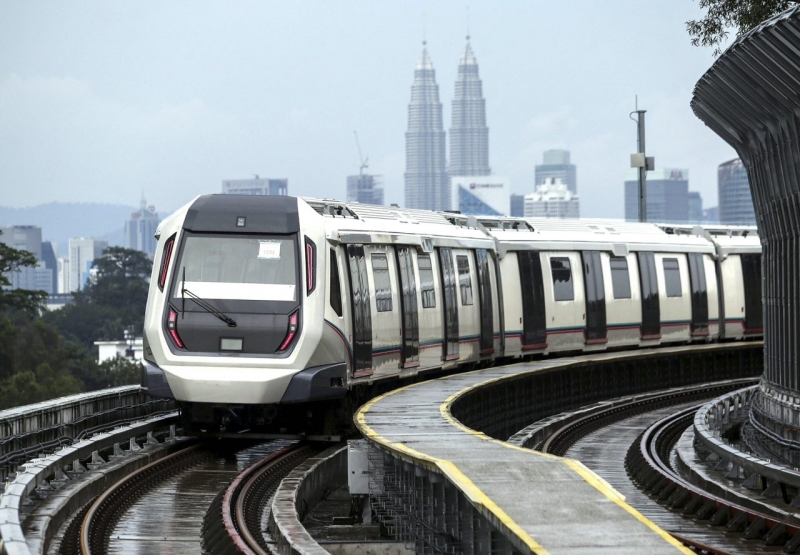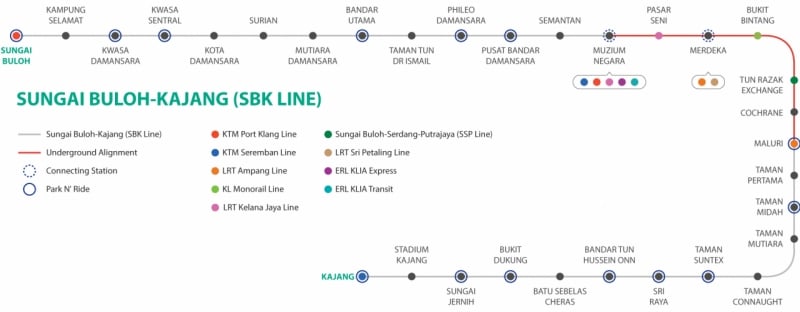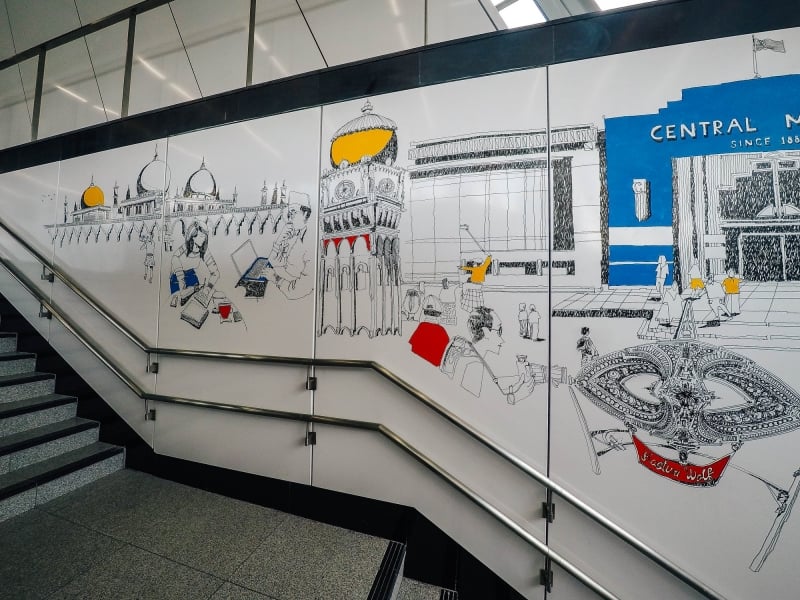It can be said that the mark of an advanced nation is the strength of its public transportation infrastructure. Malaysia’s aspirations towards achieving developed nation status can be seen in the nation’s mass rapid transit (MRT).
This rail system which transports passengers between different areas is a relatively new development in Malaysia’s public transportation infrastructure. The MRT is currently centred on the Sungai Buloh – Kajang (SBK) line which began operations in December 2016. But even in its infancy, in the urban areas, workers as a whole can save up to a whopping 280 million hours yearly commuting to work because of the MRT, which raises the nation up to a new level of productivity.
The MRT serves as a complimentary reinforcement to the existing web of public transport networks available such as the KLIA express, Rapid KL, and KTM.

Image credit: mrt.com.my
Designed to be the cornerstone of the Klang Valley’s public transportation system, the MRT is also known by several other unofficial names such as the subway, mass transit, metro or underground railway.
Features
The MRT has some impressive stats, with each four-car train set capable of transporting around 20,000 passengers in each direction per hour. For a comparison, take one car occupied by two people; one MRT train set carries 600 cars or 20 full buses.

Image credit: Sirap bandung
In order to reduce energy consumption, the MRT uses very efficient lighting and air conditioning systems as well as quieter, lighter and greener trains which are made with non-flammable and recyclable, sustainable material.
Functions
Through the addition of the MRT system, commuters can skip traffic jams (and the accompanying road rage) by opting to use a stable and effective network of public transportation instead.
The MRT line runs mostly through the Kuala Lumpur city centre, providing direct access to tourist spots such as the National Museum or Central Market by means of tracks either trailing on viaducts which are raised above street level, especially in the outer suburbs or, when in the Kuala Lumpur city centre, through underground tunnels. In most prominent areas, such as Bukit Bintang, the stations are situated strategically to provide access to malls and landmarks.
It is estimated that by 2020, the demand for travel in Klang Valley will reach 18 million trips daily and this is likely part of the reason why the MRT network is important to ensure that the city will not be gridlocked and will remain functional for the long-haul.
Primary lines

Image credit: mrt.com.my
Currently, the primary pathway for daily commuters is the Sungai Buloh – Kajang (SBK) Line. The Sungai Buloh – Serdang – Putrajaya (SSP) Line is a second line (which is undergoing development) traversing all the way from Sungai Buloh through the centre of Kuala Lumpur and its southern suburbs up until Putrajaya. Once completed, this secondary network will serve as a passageway for around two million people.
The station designs
All stations associated with the Sungai Buloh – Kajang (SBK) Line have a design which is raised and open-sided, allowing ventilation and natural lighting. These raised station designs follow the basic architecture and are grounded on the idea of wakaf, a traditional Malaysian pavilion made for travellers to take a rest before continuing their trip.

Image credit: MRTMalaysia
Klang Gates Quartz Ridge, a quartz dyke in the Klang Valley, inspired the general concept of the designs of the various underground stations, with each destination having its own original and unique flair, representing Malaysia’s multi-cultural identity through many multifaceted themes
The well-executed entrance structures for the main SBK Line underground stations are also definitely worth checking out, specifically the Pasar Seni Station, Bukit Bintang Station, Muzium Negara Station, Merdeka Station, Cochrane Station, Maluri Station and Tun Razak Exchange Station.
Practicalities
A typical ride would cost between RM1.10 to RM6.40. However, if you have a TnG (Touch N Go) card, you get to enjoy slightly discounted fares. There are a number of facilities in the MRT stations and you can find customer service offices, Suraus (prayer rooms), retail stores, feeder buses and more. Most of the major stations have a network of bus services and underground tunnels.
To help you not get lost when trying to find your bearings, ask the staff who are on duty for assistance or just grab a hardcopy map.
The list of destinations that are currently available through the MRT are as follows:
- Sungai Buloh
- Kampung Selamat
- Kwasa Damansara
- Kwasa Sentral
- Kota Damansara
- Surian
- Mutiara Damansara
- Bandar Utama
- Taman Tun Dr Ismail
- Phileo Damansara
- Pavilion Damansara Heights Pusat Bandar Damansara
- Manulife Semantan
- Muzium Negara (KL Sentral)
- Pasar Seni
- Merdeka
- Pavilion Bukit Bintang
- Tun Razak Exchange (TRX)
- Cochrane
- Aeon Maluri
- Taman Pertama
- Taman Midah
- Taman Mutiara
- Taman Connaught
- Taman Suntex
- Sri Raya
- Bandar Tun Hussein Onn
- Batu Sebelas Cheras
- Bukit Dukung
- Sungai Jernih
- Stadium Kajang
- Kajang
Check out the official website for more about the MRT.




